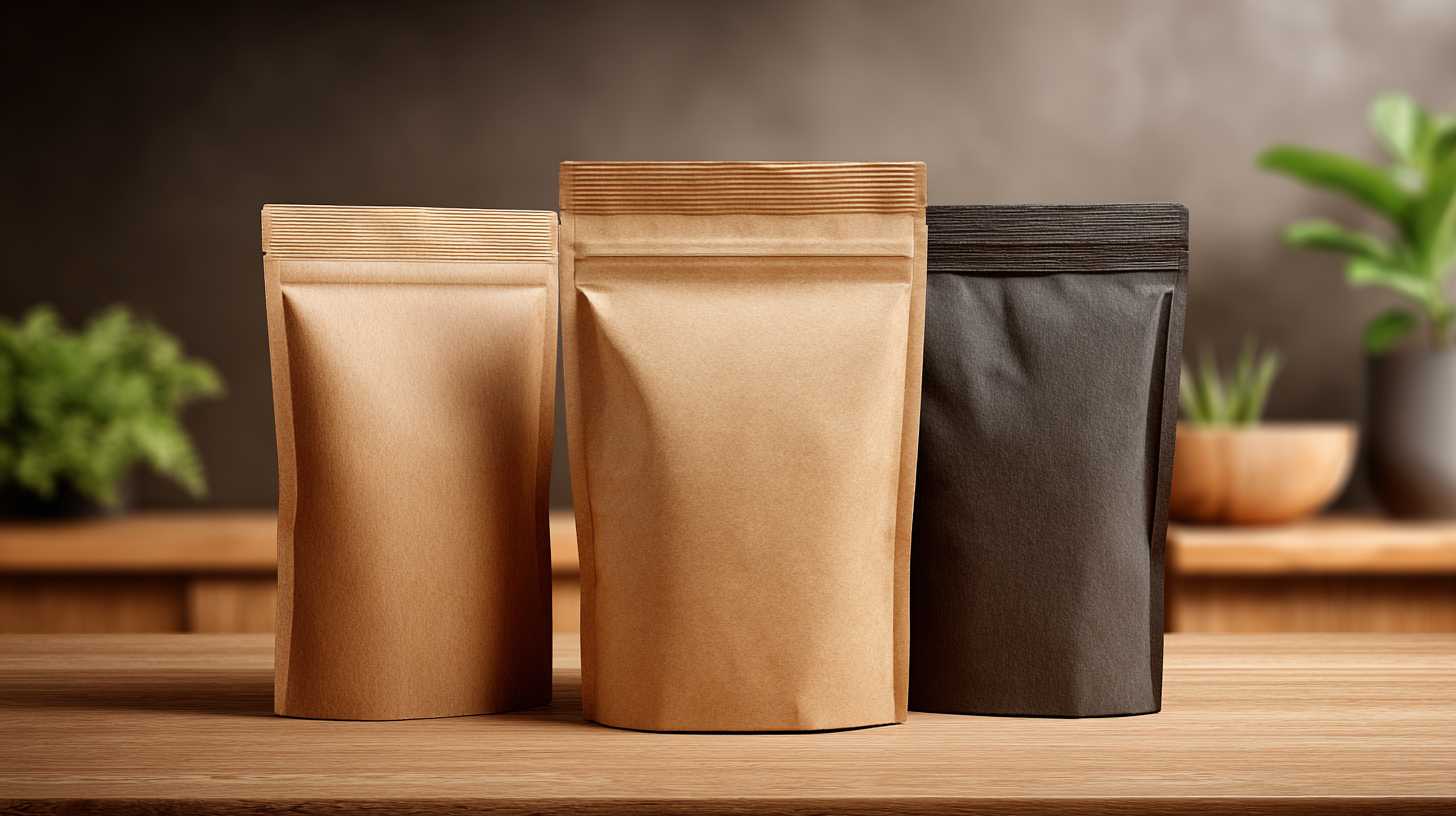As consumers increasingly prioritize sustainability in their purchasing decisions, businesses must adapt by exploring innovative packaging options that not only protect products but also minimize environmental impact. In 2023, the shift towards eco-friendly materials and processes has become more critical than ever, prompting companies to seek alternatives that align with both consumer preferences and regulatory demands. This guide aims to delve into the latest sustainable packaging options available, showcasing how brands can implement these solutions while enhancing their market appeal. From biodegradable materials to reusable containers, understanding the spectrum of sustainable choices can empower businesses to make informed decisions that contribute to a greener future. Join us in exploring these innovative packaging options that reflect a commitment to sustainability and responsibility in today’s evolving marketplace.

In 2023, the drive towards sustainable packaging has gained unprecedented momentum, thanks to innovative materials that are reshaping the industry. Biodegradable plastics, made from natural sources like cornstarch and sugarcane, are becoming popular alternatives to traditional petroleum-based plastics. These materials not only reduce carbon footprints but also decompose more efficiently in landfills and natural environments, making them an excellent choice for businesses looking to enhance their eco-friendly credentials.
When exploring sustainable packaging options, consider utilizing recycled materials. This not only diminishes the demand for virgin resources but also lowers energy consumption during the production process. Moreover, incorporating minimalistic designs can greatly reduce material usage, thus supporting sustainability goals without compromising on aesthetics.
**Tips for Sustainable Packaging:**
1. Evaluate your current packaging choices and explore alternatives like compostable mailers or reusable containers.
2. Prioritize suppliers who offer eco-friendly materials and demonstrate transparency in their manufacturing processes.
3. Encourage customers to return packaging for reuse by implementing incentive programs, fostering a culture of sustainability within your brand.

In an era where environmental consciousness is paramount, eco-friendly packaging designs play a crucial role in reducing waste. Traditional packaging materials, often derived from plastic and other non-biodegradable substances, contribute significantly to landfill overflow and ocean pollution. By adopting sustainable alternatives, brands not only minimize their ecological footprint but also appeal to a growing consumer base that prioritizes sustainability. Materials such as biodegradable plastics, recycled paper, and plant-based packaging are gaining traction, ensuring that the lifecycle of products aligns more harmoniously with the planet's health.
Moreover, innovative packaging solutions extend beyond material choices. Designs that prioritize minimalism can significantly reduce the amount of packaging waste produced. For instance, reusable containers or refill stations can curtail single-use packaging, fostering a circular economy where products are designed with their end-of-life in mind. Brands that embrace such eco-friendly innovations not only contribute to environmental preservation but also position themselves as leaders in sustainability, attracting environmentally-conscious consumers who are eager to support responsible businesses. The shift towards sustainable packaging is not just a trend; it is a necessary evolution in how we think about consumption and waste in the 21st century.
When it comes to sustainable packaging options, the choice between biodegradable and recyclable materials is crucial. Both alternatives present unique benefits, but the best option often depends on the intended use and disposal methods. Biodegradable packaging is designed to break down naturally through microbial activity, making it an appealing choice for products with short life cycles, such as food packaging. On the other hand, recyclable materials, like certain plastics and cardboard, can be repurposed and used again, minimizing waste and conserving resources.
**Tips:** When selecting biodegradable options, ensure they meet certified standards to guarantee proper decomposition. Additionally, for recyclable packaging, familiarize yourself with local recycling guidelines to ensure effective disposal. Consider the entire lifecycle of the product; choosing materials that can serve multiple purposes or that are manufactured sustainably can also contribute to a more environmentally-friendly choice.
| Option Type | Material | Decomposition Time | Recyclability | Carbon Footprint (CO2e) |
|---|---|---|---|---|
| Biodegradable | PLA (Polylactic Acid) | 90-180 days | No | 2.5 kg CO2e/kg |
| Biodegradable | PHA (Polyhydroxyalkanoates) | 6 months - 5 years | No | 3.9 kg CO2e/kg |
| Recyclable | PET (Polyethylene Terephthalate) | N/A | Yes | 1.2 kg CO2e/kg |
| Recyclable | HDPE (High-Density Polyethylene) | N/A | Yes | 1.5 kg CO2e/kg |
In 2023, sustainability in packaging has become a pivotal focus for many brands, with numerous case studies highlighting innovative approaches. For instance, Unilever has pledged that all of its plastic packaging will be recyclable, reusable, or compostable by 2025. According to a report by the Ellen MacArthur Foundation, transitioning to sustainable packaging could reduce global greenhouse gas emissions by up to 1.1 gigatons annually by 2030. This ambitious goal showcases Unilever’s commitment to reducing its environmental footprint and serves as a benchmark for others in the industry.

Another significant player is Coca-Cola, which has introduced the "World Without Waste" campaign, aiming to collect and recycle a bottle or can for every one sold by 2030. The company's recent data suggests that they are on track to use 50% recycled material in their PET plastic bottles by 2030. This initiative is backed by the recyclable nature of their bottles and a push towards incorporating more sustainable materials, which not only aligns with consumer preferences but also addresses the pressing issue of plastic pollution. Brands like Coca-Cola demonstrate that integrating sustainability into packaging strategies can enhance brand loyalty while driving positive environmental impact.
In 2023, consumer awareness regarding sustainable packaging solutions has reached unprecedented levels, driven by a collective desire for eco-friendly choices. This paradigm shift is evident across various sectors, including household and fast-moving consumer goods (FMCG) packaging.
The household care packaging market is projected to grow to USD 522.2 billion by 2032, with a consistent annual growth rate of 5.47%. Similarly, the FMCG packaging sector is expected to expand from USD 823.83 billion in 2024 to USD 1,340.8 billion by 2032, reflecting a growth rate of 6.28%. This increasing market demand highlights the urgent need for innovative and sustainable packaging alternatives.
Moreover, the rise of organic cotton and bioplastics further emphasizes the trend towards health-conscious and environmentally friendly materials. The global market for polylactic acid (PLA) is anticipated to grow significantly, illustrating a broader acceptance of bio-based materials. Furthermore, the cosmetics industry reports that over 70% of brands are adopting sustainable packaging practices, aligning their offerings with consumer preferences.
This ongoing evolution underscores a significant shift in consumer behavior, positioning sustainable packaging not just as a trend but as a fundamental aspect of modern business strategies.
Get Free Estimate!

